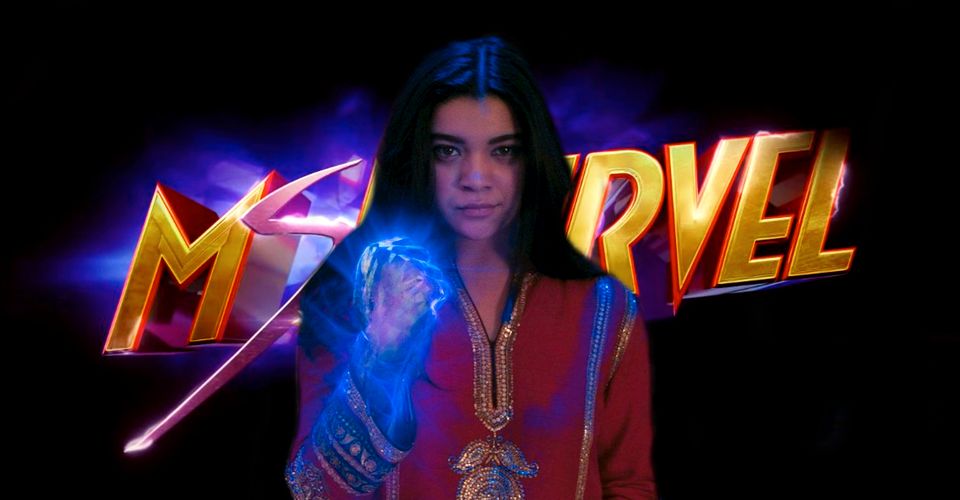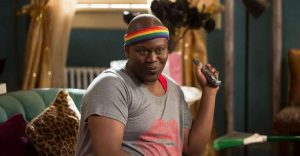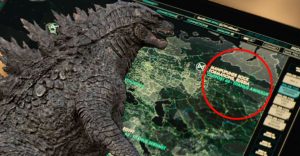Ms. Marvel’s New MCU Superhero Origin & Powers Explained (In Detail)

Marvel Studios has released its first trailer for Ms. Marvel, confirming some major Ms. Marvel power changes, as well as alterations to Kamala Khan’s origin story. Introduced in 2013 as Marvel’s first Muslim-American superhero, Kamala Khan’s cultural significance cannot be overstated. By 2015, street artists in San Francisco were using Kamala Khan as a symbol of opposition to the anti-Islamic American Freedom Defense Initiative; by 2016, president Barack Obama was name-dropping Ms. Marvel when he met her co-creator Sana Amanat. However, despite being a relatively new member of the Marvel family, it looks like the new series will make some interesting alterations to her comic counterpart.
As popular as Kamala Khan may be, Marvel took their time introducing her. As Marvel Studios president Kevin Feige explained back in 2018, it was important Ms. Marvel’s character arc be comic book accurate. “We wanted to get Captain Marvel out there first,” he observed, “so that there is something for a young Muslim girl to get inspired by.” Marvel seems to have considered that job done in Avengers: Endgame, with Captain Marvel playing a major role in the battle against Thanos – literally blasting his Sanctuary II spaceship out of the sky. And so Marvel has decided the time is right to introduce its own live-action Ms. Marvel.
Marvel Studios has dropped the first trailer for the Ms. Marvel Disney+ TV series. Surprisingly, in spite of Feige’s original hint it was important Kamala Khan’s main character arc be pretty comic-book-accurate, the trailer confirms long-standing rumors Marvel has switched up both her origin story and her powerset. Here’s everything that’s known about the MCU’s Ms. Marvel so far, including how she differs from the source material.
Ms. Marvel’s Inhumans Origin & Powers In Marvel Comics

In the comics, Ms. Marvel is tied to a group of cosmic beings known as the Inhumans. A genetically-engineered offshoot of humanity created by alien experiments millennia ago, the bulk of the Inhumans left the human race to live in a secretive, isolated city known as Attilan. At puberty, every Inhuman is exposed to a mutagenic substance called the Terrigen Mist, which triggers the development of their superpowers. In 2013’s “Infinity” event, the city of Attilan was destroyed while hovering over the Earth, and a cloud of Terrigen Mist was spread into the planet’s atmosphere. In the aftermath of “Infinity,” the world learned not every Inhuman had left all those thousands of years ago; some had remained, intermarrying with humans, passing on a dormant Inhuman gene to their descendants. Anyone with an Inhuman gene who was exposed to the Terrigen cloud spontaneously developed superpowers – explaining why a random Muslim-American kid living in New Jersey could suddenly become the superhero Ms. Marvel.
Ms. Marvel’s powers have changed and grown in the comics over the years. She essentially possesses the ability to control her own molecules; at its most basic this means she has the various “stretchy” powers of Mr. Fantastic of the Fantastic Four, but in reality she’s capable of far more. Kamala can shrink and grow at will, and can even shapeshift to change her appearance; when she first developed her powers she unconsciously tried to make herself look just like her hero Captain Marvel. More recent comics have revealed this is possible because Kamala Khan has a genetic link to an alternate dimension, borrowing mass from it to grow, and shunting mass to it so she can shrink.
Ms. Marvel’s New Origin In The MCU

The Ms. Marvel Disney+ trailer confirms Kamala Khan’s origin story has been changed completely. She’s still an ordinary teenager who randomly becomes a superhero; but in the MCU, it seems her powers are derived from stumbling across some sort of advanced alien bracelet, one that is perhaps mystical in origin. It’s true there’s still a loose homage to the Terrigen Mists – the flare of cosmic energy around Kamala Khan when she puts on the bracelet looks very similar to some artists’ representations of that Terrigen cloud. But there’s no hint of any Inhuman legacy.
It’s difficult to say exactly what this bracelet really is. Given Ms. Marvel will be tied so strongly to the MCU’s Carol Danvers, it could potentially be the MCU’s version of a Kree artifact called a Nega-Band, which was worn by the first Captain Marvel in the comics. Alternatively, the abilities it seems to give Kamala Khan bear rather more similarity to the Quantum Bands associated with the superhero Quasar.
How Ms. Marvel’s Powers Work In The MCU

The different origin story appears to have resulted in a radically different powerset for Ms. Marvel. The bracelet Kamala Khan wears seems to allow her to manipulate energy on a quantum level, manifesting that power through force-fields of some kind. Over the course of the trailer, she’s able to use these light constructs in a variety of forms, with radial blasts, kinetic pushes, and even stepping discs. Most amusingly, there’s a version of Kamala Khan’s signature “embiggened” hand, with Kamala creating a giant fist around her hand before punching an enemy. There may, of course, be other powers that come from these mysterious bracelets, ones that haven’t been shown; Ms. Marvel may well have increased resistance to injury, or a degree of superhuman strength.
All in all, then, the changes made to Ms. Marvel are on a scale that simply hasn’t been before in the MCU. But it’s important to note Marvel do seem to have tried to stick to the character beats, particularly as regards Ms. Marvel’s Muslim-American background and the issues of identity she wrestles with. There’s one notable shot in the Ms. Marvel trailer where Kamala’s mother attempts to define her, pointing to a conflict of identity that will likely be central to the show.
Why The MCU Has Changed Ms. Marvel So Much

The radical changes to Ms. Marvel’s powers and origin will surely be controversial. The adjusted origin story is likely tied to Marvel’s reluctance to deal with the Inhumans, a franchise Feige himself never seems to have been especially keen on; an Inhumans movie was dropped shortly after a corporate restructure at Marvel gave him sole control of the MCU, and they were passed to Marvel Television. Unfortunately their Inhumans TV series proved a flop, essentially killing off the franchise – even in the comics. Given this troubled context, Marvel Studios likely simply didn’t want to deal with the Inhumans at all.
A changed origin story naturally opens up the possibility of an altered powerset. There have long been concerns Ms. Marvel’s powers could look very creepy in live-action, with even her co-creator G. Willow Wilson expressing her reservations. “I think there’re some characters who are very much set up for the big screen, they’re very naturally sort of cinematic,” she reflected in an interview with Polygon. “But with Ms. Marvel, we really weren’t interested in creating something that had very obvious film potential. I was really leaning – and I know Adrian [Alphona] and Takeshi [Miyazawa] and all of the artists as well – were really leaning into the comic book-ness of this character.” Meanwhile, others have pointed out there are far too many visual similarities between Ms. Marvel’s core “stretchy” powerset and the abilities of Mr. Fantastic of the Fantastic Four. Marvel Studios is currently working on introducing its own version of the Fantastic Four, and they may not have wanted to have two visually similar powersets in play at the same time.
There is, of course, one final potential reason for the changes that affect Ms. Marvel’s powers; the mandates of the story. Little is known about the mysterious bracelet Kamala Khan has stumbled on; should they be Nega-Bands or Quantum Bands, then there would be a logical tie between Kamala Khan’s Ms. Marvel and Captain Marvel. This would help set Kamala Khan up for her MCU future as Ms. Marvel.
- Doctor Strange in the Multiverse of Madness (2022)Release date: May 06, 2022
- Thor: Love and Thunder (2022)Release date: Jul 08, 2022
- Black Panther: Wakanda Forever/Black Panther 2 (2022)Release date: Nov 11, 2022
- The Marvels/Captain Marvel 2 (2023)Release date: Feb 17, 2023
- Ant-Man and the Wasp: Quantumania (2023)Release date: Jul 28, 2023
- Guardians of the Galaxy Vol. 3 (2023)Release date: May 05, 2023
About The Author


















